Your Selection of Composite Horseshoes and Pure Urethane Horseshoes
Are you not quite sure what the term "composite horseshoe" means? This is where you will find answers to your questions; from the basic features of the horseshoes to special options and the best model for leisure riders. If you still have any questions, simply get in touch with our team. Our aim is to work with you to find the ideal horseshoe for your horse.
At the bottom of this page, we briefly discuss various riding disciplines and give a general recommendation as to which models we consider suitable for you. Our team will be happy to help you with individual advice for special challenges.
Basic Features of our Composite Horseshoes
The Synthetic Material Used
The synthetic cover provides shock absorption. The degree of hardness of the synthetic material is closely related to the abrasion resistance and therefore the durability of the horseshoe. However, there are other factors that influence the durability of the horseshoe. You can find out everything you need to know about this important topic under "Abrasion and Durability".
Which shoe is best for a horse depends not only on the individual preferences of the four-legged friend, but also on the temperature: The softer plastic of the Standard models remains flexible even in the cold season and retains its shock-absorbing properties; the harder material of the Extra models, on the other hand, is more heat-resistant and remains abrasion-resistant even at higher temperatures.
- The Standard line — the "orange" horseshoes are made of relatively soft synthetic material and are recognizable by the knob inserts (or small dots) in orange color.
- The Extra line — the "green" horseshoes are made of slightly harder material than the Standard horseshoes. They can be recognized by their knob inserts (or small dots) in green color.
- The Basic models do not have colored knob inserts; their degree of hardness is indicated by an abbreviation (Std./Ex.) on the hoof side of the horseshoe.
- The regranulate horseshoes are our resource-saving models. They are made from the sprues of the Standard or Extra horseshoes. The horseshoes made from Standard regranulate have blue knob inserts, the shoes made from Extra regranulate have yellow knob inserts.
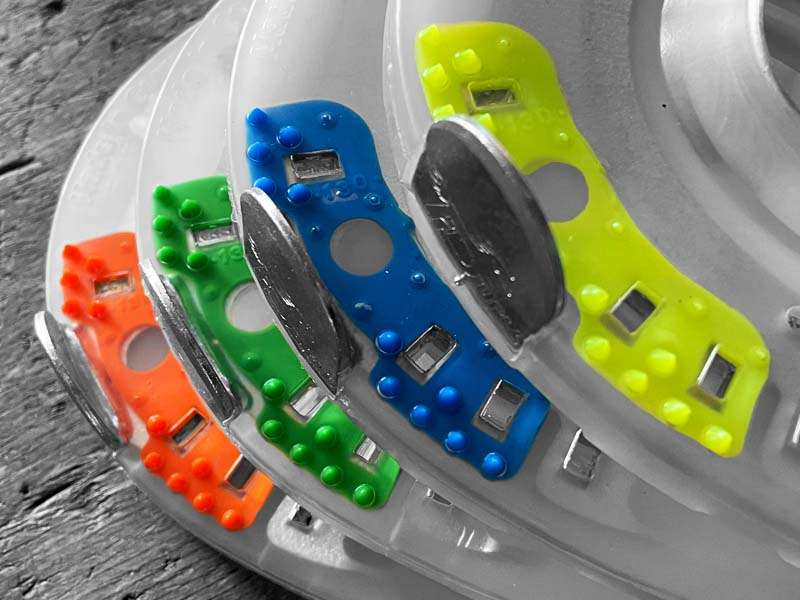
Synthetic Lip
Most of our horseshoes are manufactured with a molded synthetic lip. The synthetic lip is similar to the Snowgrip® on conventional shoes and largely prevents snow, mud and sand from the arena from balling up. Our horseshoes are therefore (also, but not only) suitable for use in winter.
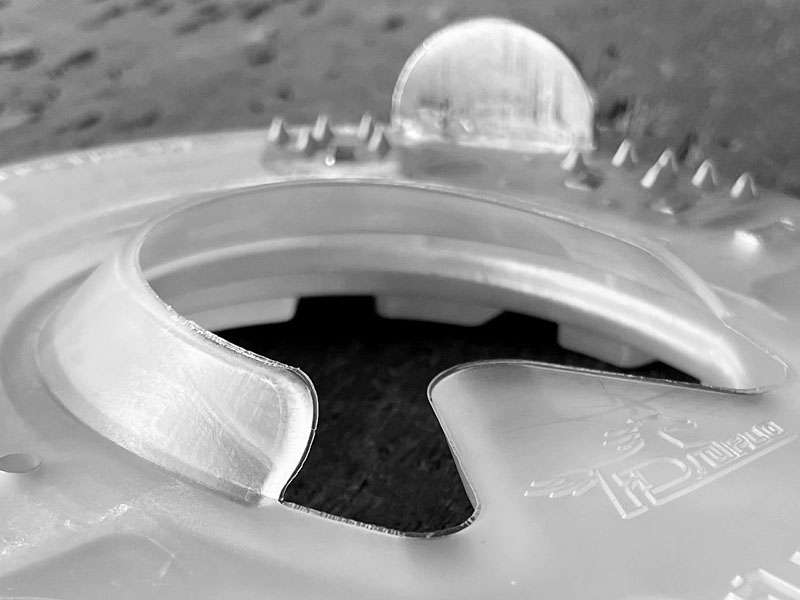
Quarter Clips
Many of our horseshoes are fitted with quarter clips — simply because this concept has proven so successful. The two quarter clips make it easier to adjust the horseshoe to the hoof and to nail it on, because the horseshoe is already quite stable during this process. During the regular shoeing period, the quarter clips largely prevent the shoe from twisting or slipping on the hoof.
The composite horseshoe with quarter clips is and remains our undisputed bestseller.
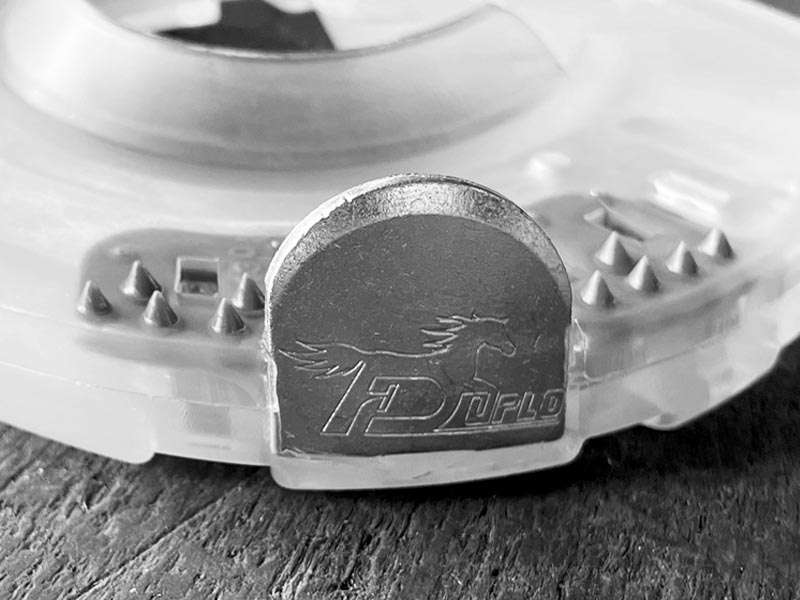
Knobs
Good to know — the different variants of our knobs and their function:
- The sturdy knobs of the colored inserts are pressed into the load-bearing edge of the hoof wall and help to prevent the nailed horseshoe from twisting on the hoof.
- The soft, production-related knobs of the "Nailless" and "Classic" models are made of the same material as the plastic cover and do not offer any protection against twisting of the horseshoe. Please remove all knobs before gluing.
- To be on the safe side, please remove all knobs before applying the adhesive shoe. If the knobs have not yet fully penetrated the hoof horn when gluing, the glue-on tabs may be compressed later, which could have a negative effect on the secure hold of the adhesive horseshoe.
- All open-toed models, the "Basic", our base plate, and the pony shoes have no knobs.
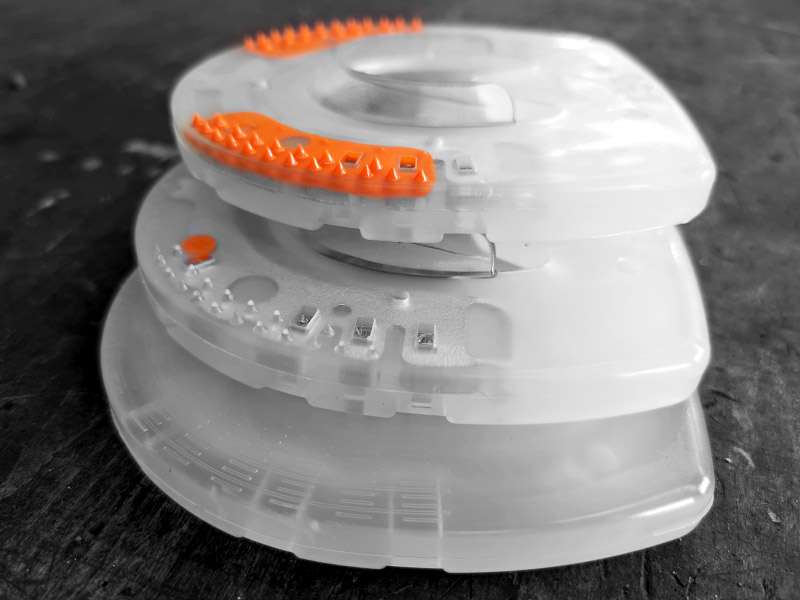
Possible Optional Features, Based on Your Requirements for Your Ideal Horseshoe
Optimized Grip
One advantage of the synthetic cover of our horseshoes is that they inherently have a certain grip due to the material and the profiled surface. However, there are sometimes situations in which additional grip in form of a deeper profile, spikes or studs can be useful.
All threaded holes should be sealed at all times - either with the appropriate stud or a suitable closing plug. You can find both in the "Anti-Skid Products" category in our online store.
Profiled Horseshoes
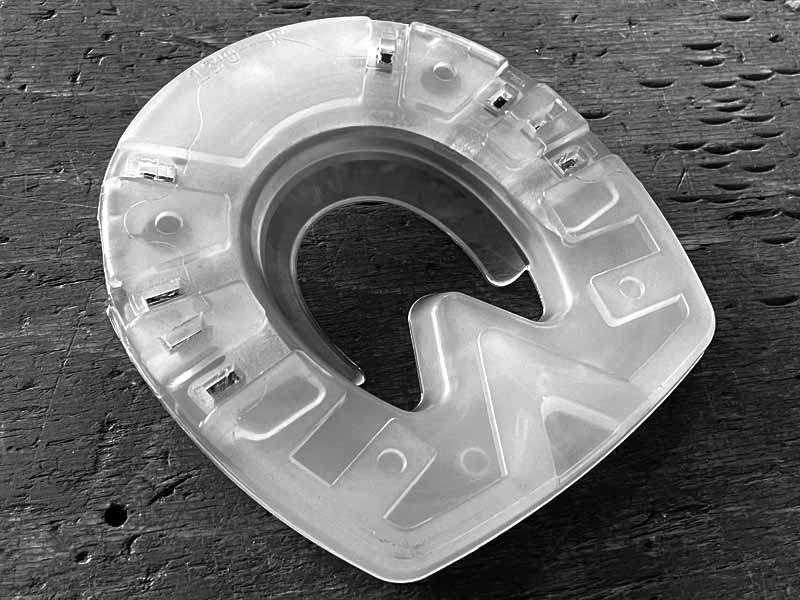
This model is equipped with a particularly pronounced profile, which further improves the anti-slip properties of the horseshoe. The horseshoes with profile are particularly recommended when riding off-road, where additional grip is required. The "Basic" is a cheaper version of this model.
Stud Holes for Anti-Skid Studs
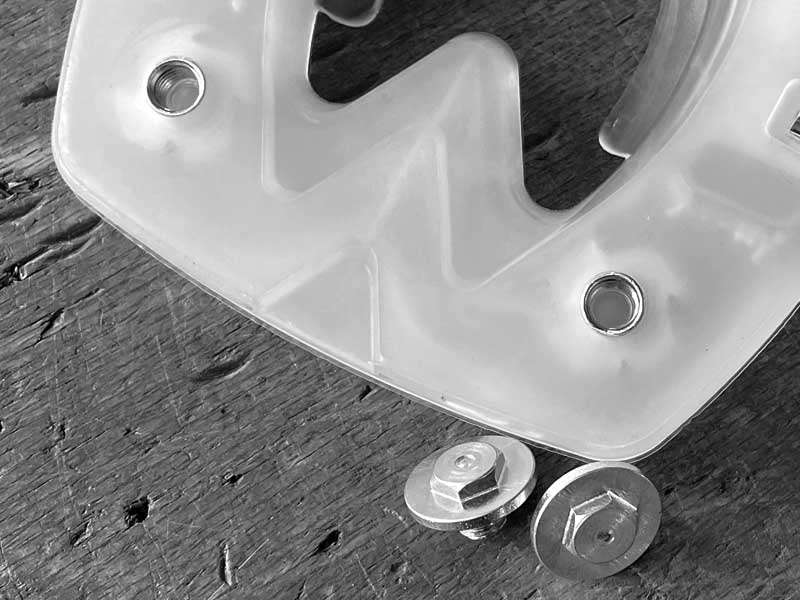
The threaded inserts integrated into the synthetic bar of the horseshoe are suitable for the permanent use of our anti-skid studs with disk. Regular stud replacement is not possible with these composite horseshoes. The 4mm studs are best suited for this model; it is also possible to screw in spikes.
Solid Stud Holes for the Best Grip Possible
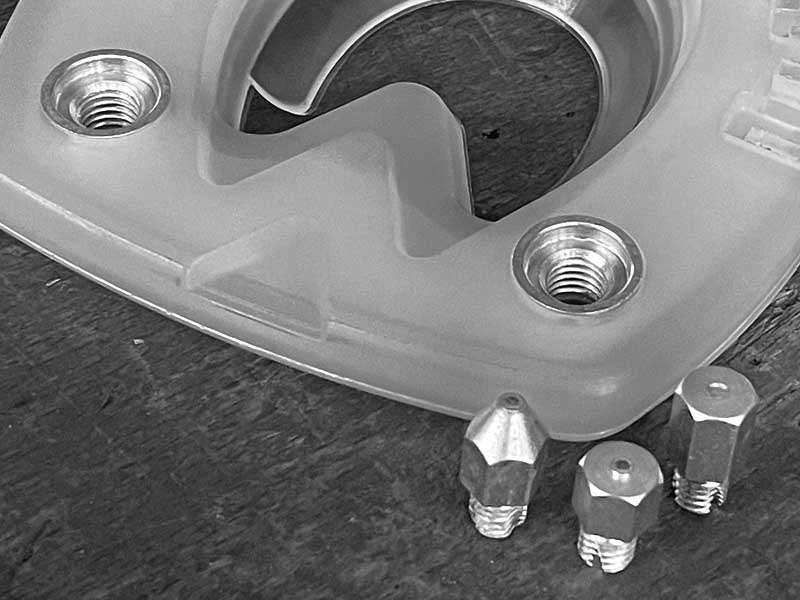
The "Jumper" is a straight bar horseshoe in which the stud holes are firmly anchored in the metal core. This makes it possible to use higher studs and to screw them in and out regularly. Thanks to the solid bar, the Jumper is often used in disciplines such as eventing and show jumping.
More or Less Stability
The heart of our composite horseshoes is their metal core. Depending on whether you choose a pure synthetic shoe or a solid straight bar shoe, the effects on the hoof mechanism are different.
Completely Synthetic Horseshoes with Synthetic Bar
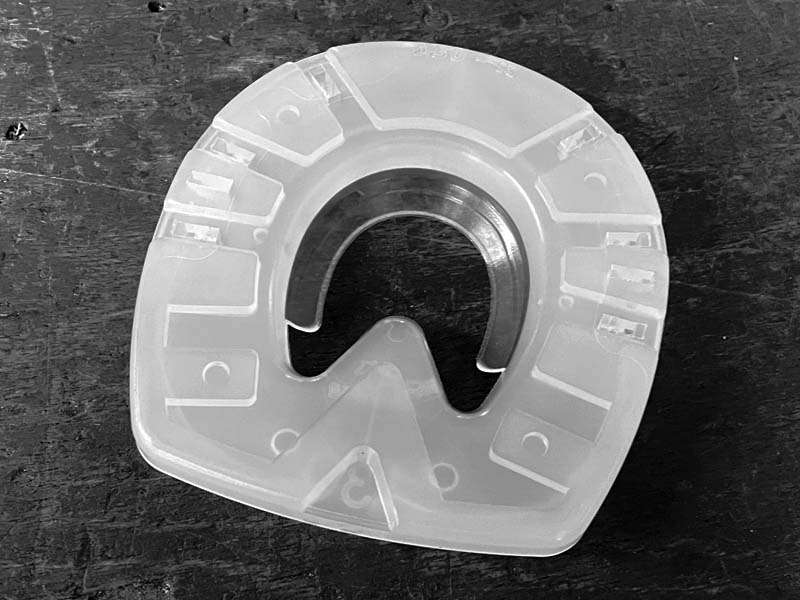
Our pure synthetic horseshoes without a metal core were originally developed to renew the profile of hoof boots, but are now also often used as adhesive horseshoes. When using pure synthetic horseshoes as hoof protection, the lower stability must of course be taken into account, similar to a barefoot shoe for humans.
Horseshoes with Metal Core and Synthetic Bar
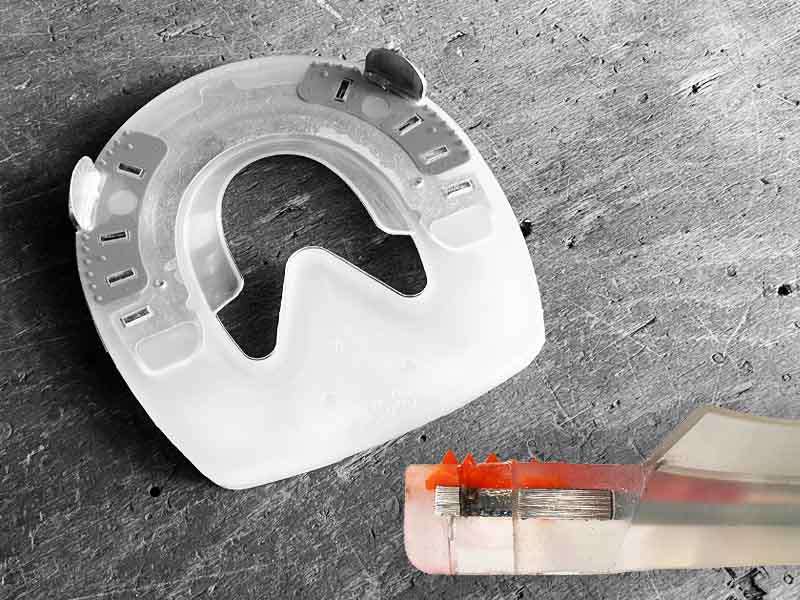
The metal core in the composite horseshoe supports the bony areas of the hoof, provides stability and ensures optimized pressure distribution. The metal core also gives the hoof nails a secure hold — just like a traditional horseshoe. You can find detailed information about the combination of a synthetic cover and metal core in our store.
Straight Bar Horseshoes
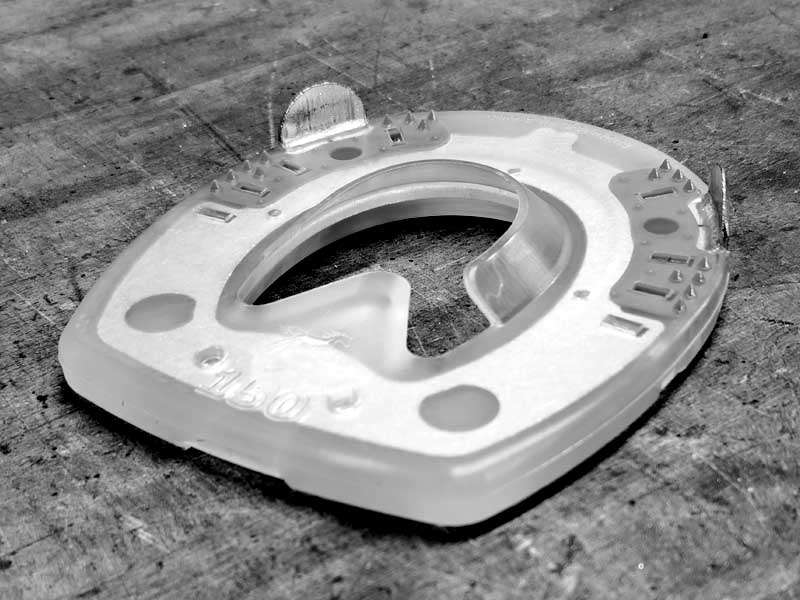
Our straight bar horseshoes have a closed metal core with a solid bar (similar to conventional heartbar horseshoes) and are therefore absolutely sturdy and torsion-resistant even when exposed to high strain. They are therefore ideal for horses that require a shoe that is both more solid and as shock-absorbing as possible.
Special Requirements
According to the motto "special situations require special measures", we also have a few special models among our horseshoes.
Adhesive Horseshoes — Our Recommendation for Gluing: the Nailless
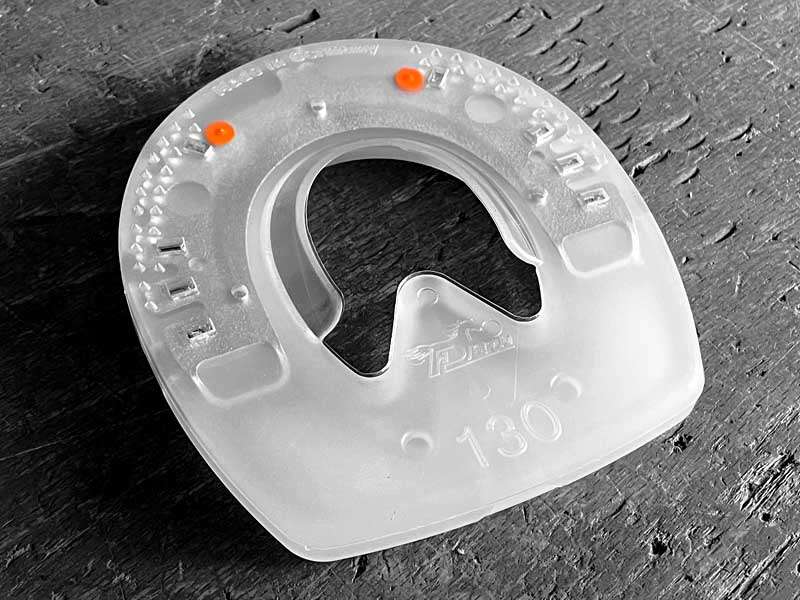
The "Nailless" was developed for use as an adhesive horse shoe. It has neither quarter clips nor a sturdy knob insert and is perfect for welding to the various adhesive tabs. The degree of hardness of the shoe is indicated by colored dots (orange or green).
Hoof Packing — Horseshoes with Closed Sole Area for Padding Material
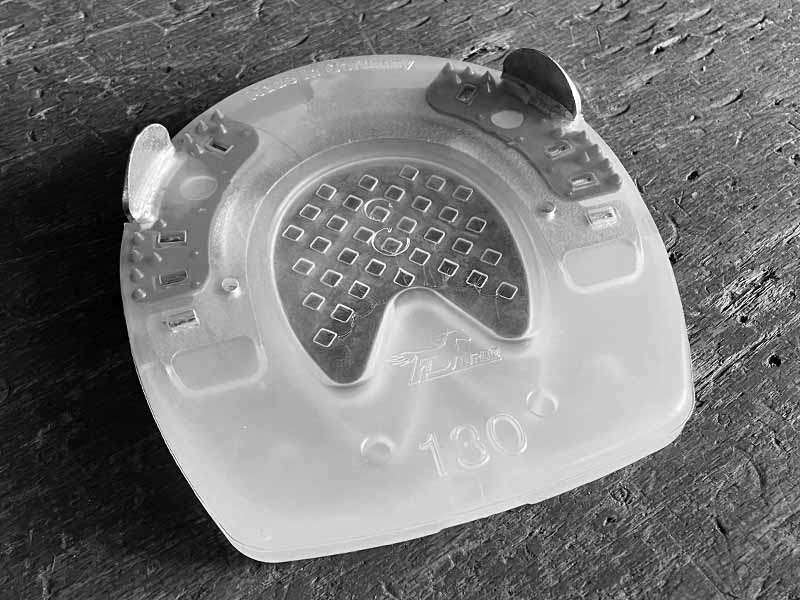
We like to use our horseshoes with closed soles for flat, sensitive soles or very stony ground. There are also numerous possible applications in the therapeutic field. The horseshoe can be combined with kneadable or liquid padding material.
Horseshoes with Protective Steel Border in the Toe Area
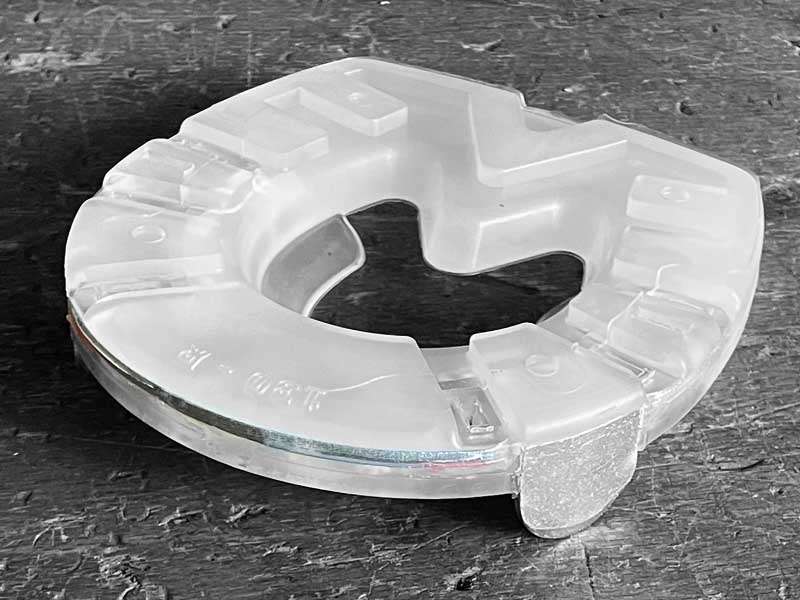
The additional steel edge in the toe area of the horseshoe protects the synthetic material in this area of the horseshoe from premature wear in demanding terrain. The "Arizona" is also often used as a toe weight shoe for gaited horses.
Heavy Duty Shoes (HDS) — Particularly Solid and Abrasion-Resistant up to Size 198mm
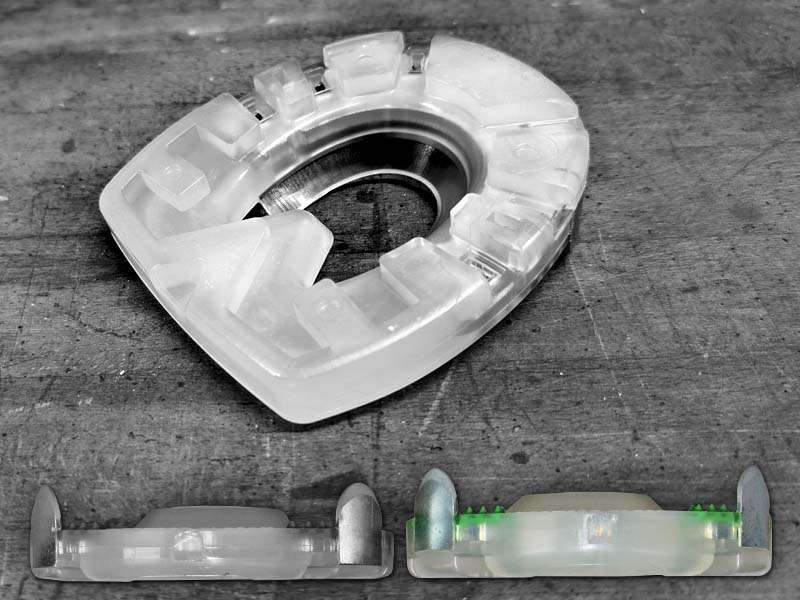
The Heavy Duty Horseshoes (HDS) are made with a slightly more solid metal core and a thicker synthetic layer. The models are primarily aimed at cold-blooded horses and "working horses", but also generally at anyone who needs a particularly abrasion-resistant horseshoe.
Pony Shoes — Shock-Absorbing Horseshoes for Very Small Hooves from 50mm up
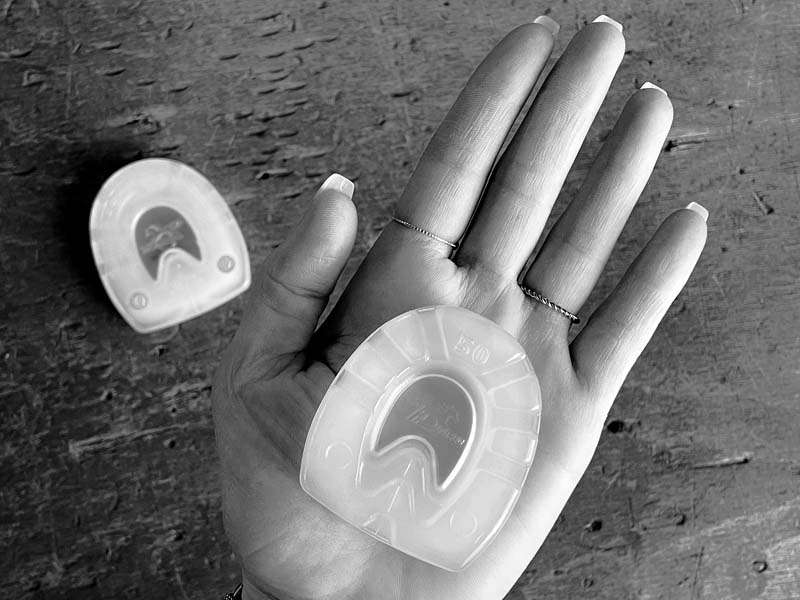
Our pure synthetic horseshoes for very small hooves start at a size of 50mm. With this shoe, even very small pony hooves can finally be fitted with a shock-absorbing adhesive shoe. The pony shoes can be found in the store under "Classic" because they don't have a metal inlay.
Open-Toed Horseshoes — Often Referred to as "Laminitis Shoes"
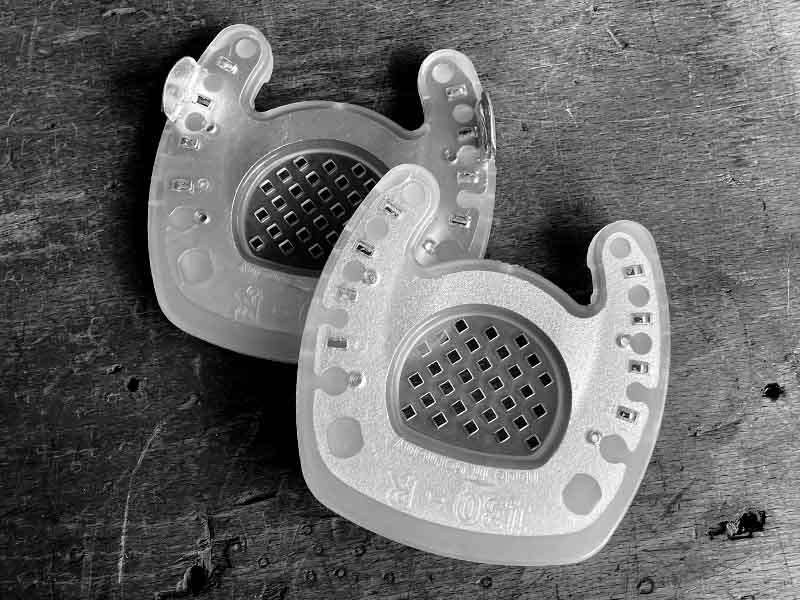
Our various models of open-toed composite horseshoes were originally developed for the treatment of chronic founder (laminitis). In everyday practice, they have proven to be useful not only for founder hooves, but also for a number of other diagnoses.
Areas of Application for Composite Horseshoes
Particular Shoe Shapes and Individual Hoof Situations
Our composite horseshoes can be nailed, glued or attached to the hoof using our cast hooks and a cast bandage. We recommend the glued application for the pure synthetic horseshoes.
The adhesive application is becoming increasingly popular and is no longer only used out of necessity. Cast shoes, on the other hand, are only used when the diagnosis makes it necessary. Especially in the field of orthopaedic and therapeutic shoeing, it depends on the assessment of the farrier and often also on consultation with the vet.
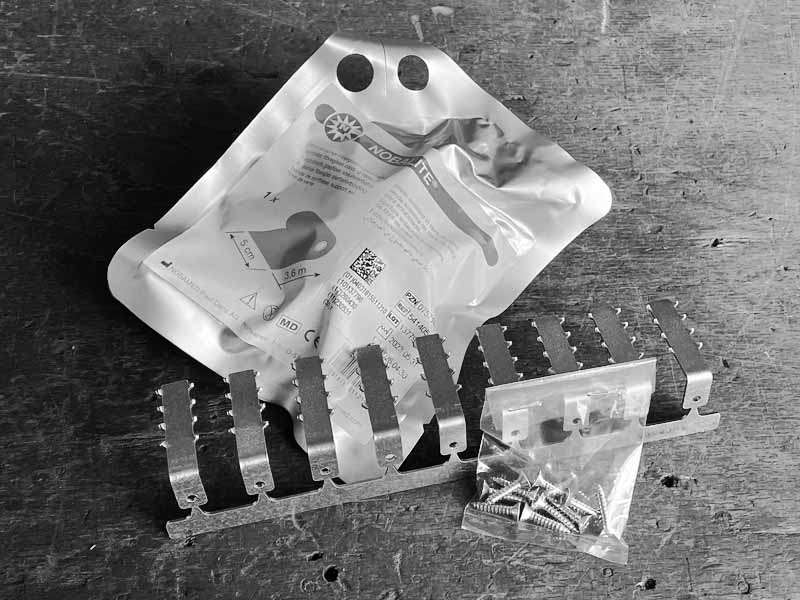
Cast Shoes
If the hoof capsule needs to be immobilized due to a therapeutic indication, it is also possible to use cast hooks and a cast bandage.

Wedge Shoes — Changing the Hoof Angle
Wedge shoeing is also possible with our composite horseshoes. Our synthetic wedges for changing the hoof angle can be found in the accessories section. One wedge changes the hoof angle by 2.5 degrees. It is also possible to combine two wedges.
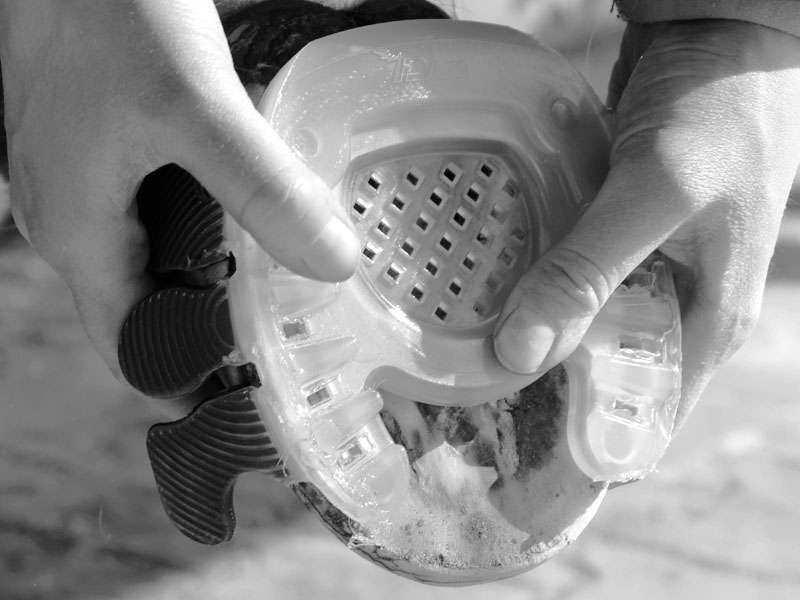
Laminitis Shoes
Our open-toed horseshoes were originally developed for use in cases of chronic laminitis. However, they are also used to support other diagnoses. They are often combined with the Wolf Busch® adhesive tabs, especially in cases of founder.
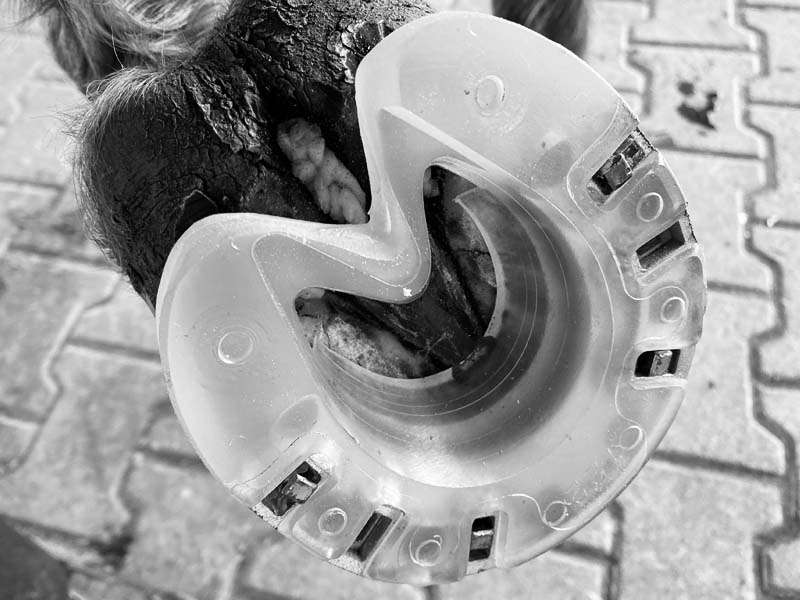
Thrush
Some farriers are concerned when dealing with thrush because the synthetic bar is closed over the frog and does not allow air to reach the problem areas. However, it is possible to modify the horseshoe before nailing it on so that it leaves a free space above the frog grooves and thus allows the thrush to be treated.
However, experience shows that only very few horses develop thrush during the time with our shoes or that the disease even gets better. If a horse still has thrush, this is often (also) due to poor stable hygiene and only to a very small extent to the type of shoeing — but, as always, exceptions prove the rule.
In the section "Adjustments and Modifications", you will find a few tips on how to adapt the horseshoe in the frog area. If you are looking for suitable hoof care products for the treatment of thrush, take a look at our store.

Spavin, Suspensory Ligament Problems, and Osteoarthritis
We are often asked whether our horseshoes can be used for spavin, fetlock problems, osteoarthrosis and other individual challenges. Of course, it is safe to assume that the shock absorption of the synthetic coating is positive in most cases, especially in the case of osteoarthritis. However, too many factors are involved in individual challenges of any kind. We therefore thank you for your understanding that a meaningful assessment of these cases can only ever be made by the on-site farrier.
Equine Disciplines (in Alphabetical Order)
You are looking for the perfect shoe for your horse? Our horseshoes are ideal for all kinds of joint activities. Composite horseshoes combine stability and shock absorption and are therefore generally suitable for ridden and unridden horses of all ages and breeds in everyday life, leisure and competition.
In the following we would like to give you some examples of riding disciplines. We are also happy to provide you with personal advice. However, we would like to point out that our advice from a distance can never replace the expert's view on site. Please be sure to consult your farrier; he knows you and your horse best and will be able to help you choose the right shoe and fit it professionally. For more information, you can also take a look at our FAQ section → Testimonials. Here we have provided some feedback from our customers for you.

Alpine Crossings, Mountain Tours and Generally Rough Terrain
When the paths become narrow, steep and rocky, the demands on the horseshoe are particularly high: it must be absolutely non-slip to support the horse's sure-footedness; it must also be extremely durable to function reliably even under adverse conditions. Our composite horseshoe meets these requirements perfectly. Its material is as slip-resistant as an unshod hoof; the use of a deeper profile and spikes or studs can further improve the shoe's grip on rough terrain.
There is a special model with a steel reinforcement in the toe area to prevent the plastic from being torn out, which can occur when climbing over rocks, for example. The risk of the horseshoe twisting on the hoof can be reduced by using quarter clips. The horseshoe is therefore also ideally suited for extreme off-road performances.
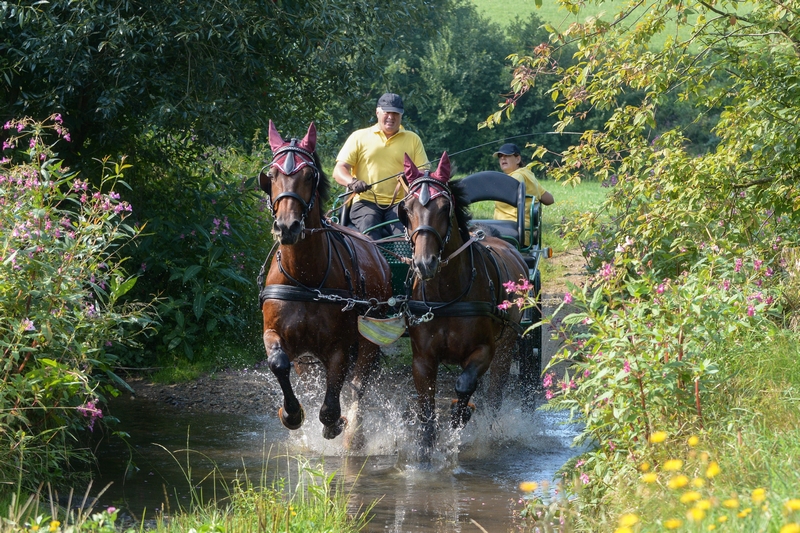
Draft and Driving Horses
A composite horseshoe is extremely versatile and has also proven its worth in recreational and competition driving. Especially on difficult surfaces — on wet paths, in tight turns or on particularly hard or stony ground - the horseshoe supports the horse's performance in a special way thanks to its slip resistance and shock absorption; at the same time, it is also very abrasion-resistant and durable over longer distances.
We recommend choosing a model with quarter clips for draft and driving horses; depending on the strain, you may even need a sturdy straight bar shoe with threaded inserts. If you have challenges with abrasion, our Heavy Duty Shoe range is a good alternative.

Dressage
A composite shoe is also ideal for use in dressage sport. Due to the large contact surface and the frog support, the hoof sinks less in sandy ground and thus relieves joints and tendons. The Arizona with steel reinforcement in the toe area or a straight bar shoe with a solid bar can support the movement pattern by shifting weight if necessary. A combination of conventional horseshoes on the front hooves and composite shoes on the hind hooves (or vice versa) is also possible — the horse's individual needs and preferences can be taken into account.
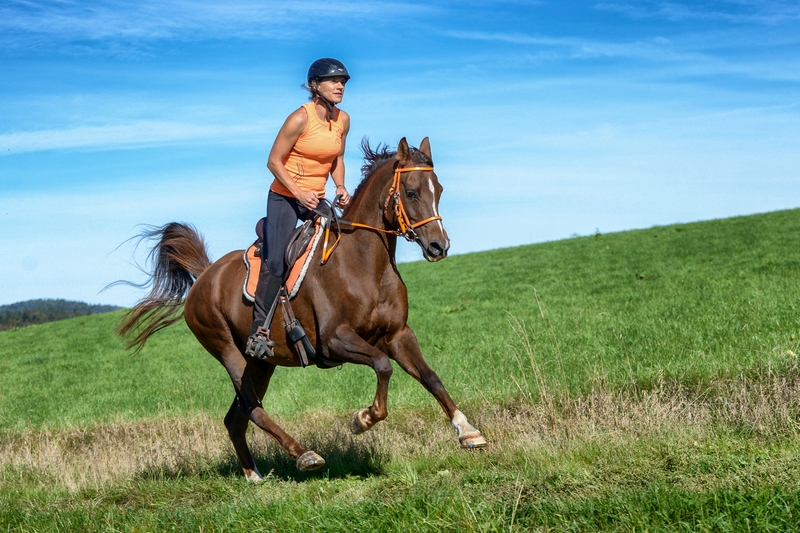
Endurance Riding
Shock absorption is an advantage for the horse, especially over long distances. A shoe with a profile increases slip resistance on difficult surfaces. The disadvantage — especially on an endurance ride, when it is very hot on the day of the competition and 60 miles are ridden on very hard and hot ground — is that profiled shoes are usually less resistant to abrasion than shoes without a deeper profile. Depending on the horse's sure-footedness, many like to use the extra shoe with quarter clips, but the HDS is also becoming more and more popular. Every endurance rider has to weigh up what is the ideal choice for him and his horse.
As the weight of the horseshoe plays an important role, especially in the long distance range, we would like to briefly list the approximate weight of our various composite horseshoes in size 122mm/round. Please note that there are always certain fluctuations due to production.
- Clipped and Profiled Composite Horseshoe: approx. 261g
- Basic with Quarter Clips and Profile: approx. 263g
- Clipped Composite Horse Shoe: approx. 274g
- Clipped and Profiled Heavy Duty Shoe: approx. 334g
Profiled Horseshoes Basic Clipped Horseshoes Heavy Duty Horseshoes
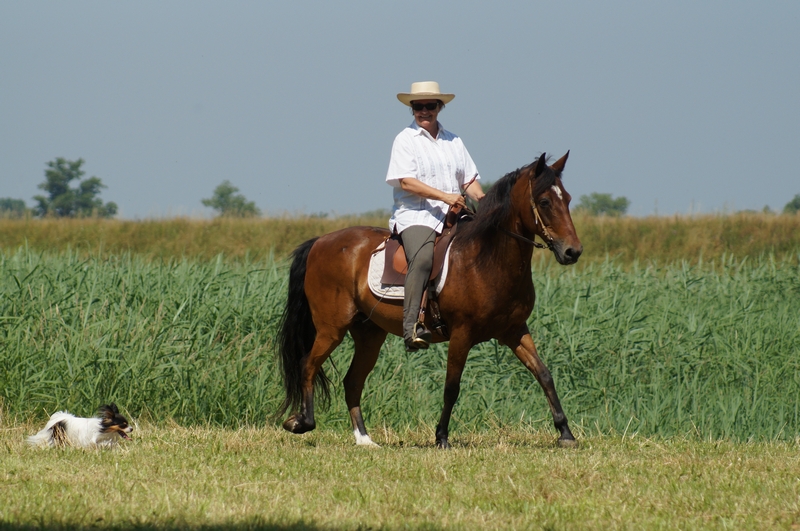
Gaited Horses
Every horse is happy to have comfortable hoof protection — and therefore, a shock-absorbing composite shoe is naturally also suitable for gaited horses. You can respond individually to your horse's needs and decide whether the shoe should be used "only" as hoof protection or also to positively influence the horse's gait mechanics. If it is necessary to support the locomotor mechanics by shifting weight, the horseshoe can also be used accordingly — a steel reinforcement in the toe area acts as a toe weight, a stable transverse bar on the straight bar shoes increases the weight in the heel area, and a particularly solid metal core increases the weight of the entire horseshoe.
Clipped Horse Shoes Arizona Straight Bar Horseshoes Heavy Duty Shoes
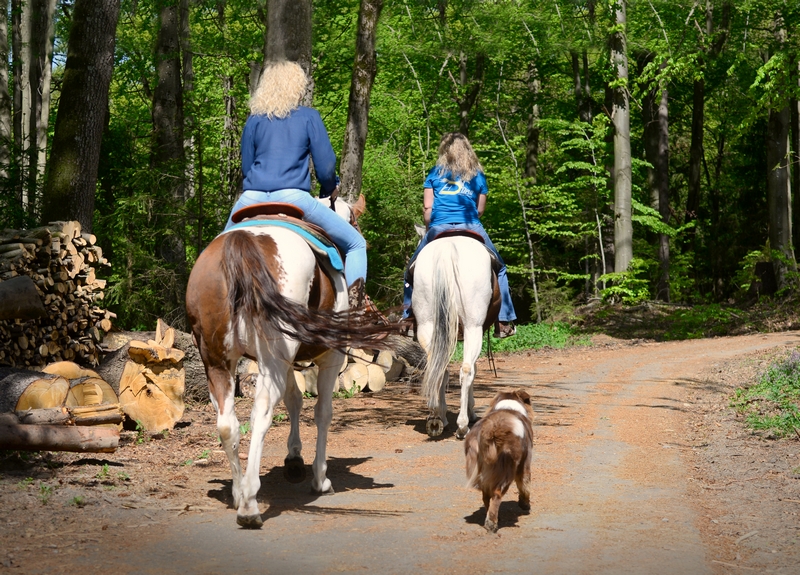
Leisure Riding
From training in the indoor arena, joint walks and leisurely rides to multi-day trail rides and many other activities: Your horse should feel comfortable with its hoof protection and be able to walk safely off-road. Most leisure riders therefore opt for shoes with quarter clips and a profile. The "Basic" model is a price-optimized variant in this sector. There are also many fans of our Wolf Busch® adhesive tabs, especially among leisure riders.
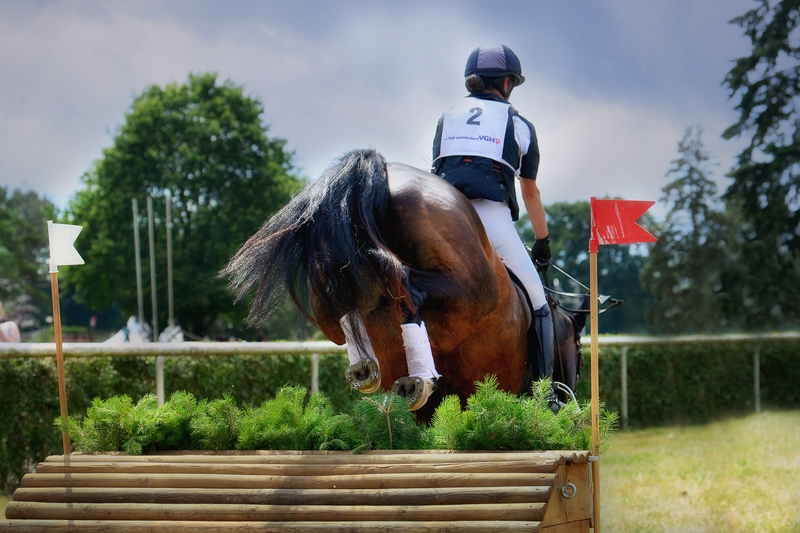
Show Jumping and Eventing
In show jumping and eventing, the demands on the horseshoe are particularly high: fast turns on potentially slippery surfaces require an extremely stable horseshoe that can be fitted with two or four studs and at the same time ensures the best possible shock absorption and frog support when landing after jumping.
Many people opt for our "Jumper" in this area in particular. The Jumper is a straight bar horseshoe with sturdy threaded inserts. The horseshoe is suitable for interchangeable studs, which can be easily screwed in and out as required. During the studless period, plugs keep the threads clean.
This means that the horse is not only well prepared for a wide range of conditions on the show jumping course, but can also shine in the dressage arena or cross-country with the same shoe or enjoy life in the herd again without studs after training and competition.
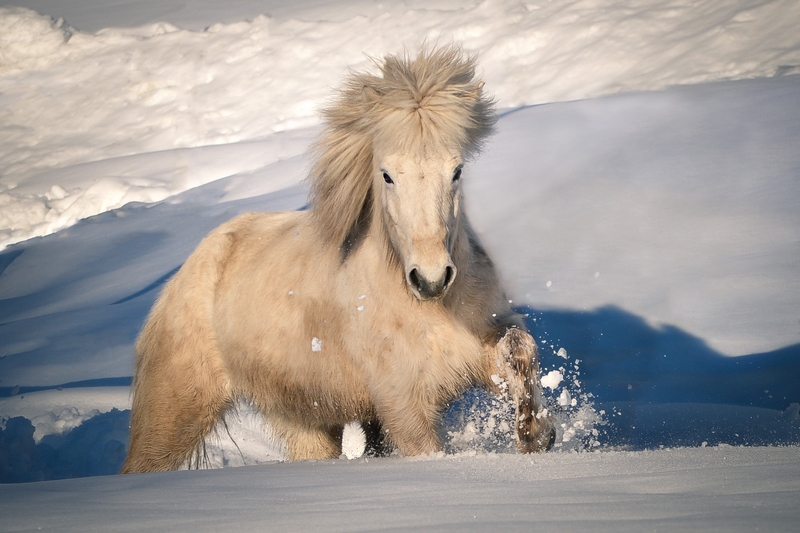
Winter Shoeing
With the right preparation, nothing speaks against injury-free fun in snow and ice. The horseshoe should protect against bruising on frozen ground; it must also be absolutely non-slip and prevent snow from piling up. If these requirements are met, winter can come! A composite horseshoe is generally very suitable for winter shoeing: The Standard orange models are made of relatively soft plastic, which remains elastic and shock-absorbent even at low temperatures.
With its profiled surface, the horseshoe is basically as slip-resistant as an unshoed hoof; traction can also be improved with spikes and studs. The molded plastic lip serves as a kind of snow grip and largely prevents wet snow from accumulating under the hooves and becoming a tripping hazard.
The special model "Snow Edition" is a new version of the clipped and threaded horseshoe with optimized anti-snow protection. If all else fails and there are still problems with snow piling up, we recommend a model with a closed sole.
In countries such as Sweden, Finland and Canada, two cleat holes are not enough due to the extreme winter conditions. In these countries, our customers therefore like to use the "Jumper" in combination with our ice cleats in winter.
